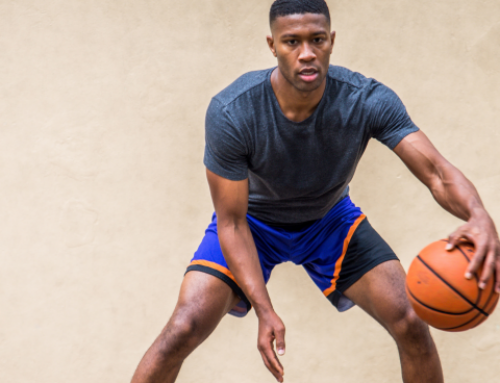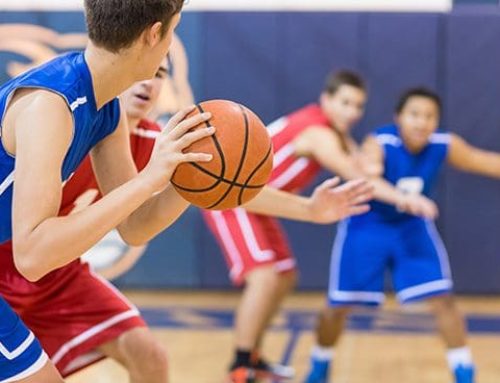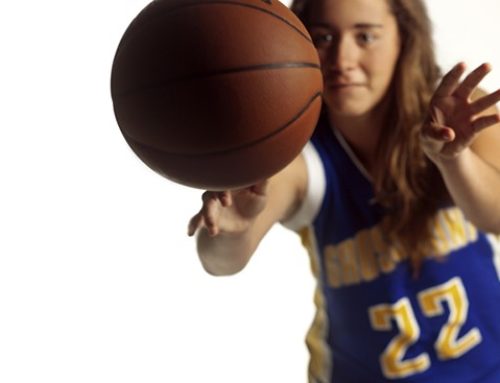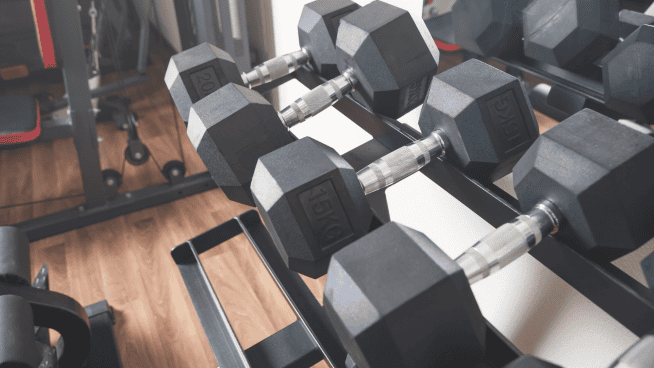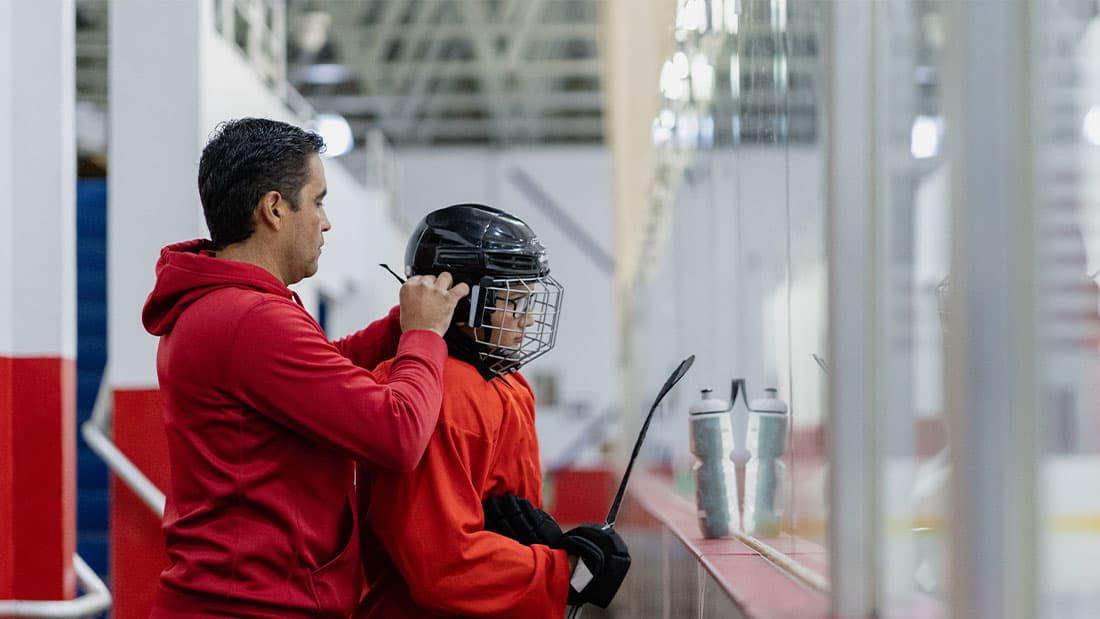Keys to Better Help-Side Defense
“Offense sells the tickets. Defense wins the games.”
Everyone knows defense is the key to victory, but tough defense is a team effort. This means that every person on the court needs to be playing hard whether on-ball or on the weak side. While lockdown one-on-one defense often gets to be the star of the show, help-side defense is what makes teams great.
Help-side comes from players on the weak side (non-ball side) of the court. They need to be able to help any penetration to the middle or low post and get back to their offensive player on a skip pass. When a team has good help-side defense, it elevates the entire game. Teammates know they can go for riskier steals or play tough defense without worrying about getting beat since the team has their back.
Typically, help-side players will play off the opponent, and if they are two passes away, they will be on the “I” or near the split-line of the key. This position closes down the middle so that no cuts or passes can get through to the hoop. But this can be tricky to master.
So, how do you level up your help-side defense?
Keys to Help-Side Defense
Jump to the Ball
Every time the ball is passed, you need to jump to the ball. Not hop, not jog. Jump. This will get you in position quickly, ensuring that the offense won’t have time to slip through the middle and get to the basket. Help-side is not a defensive break. You’ll be working hard to get into position as the ball moves around the court.
See Ball / See Player
When you jump to the ball, jump to where you can see both your player and the player with the ball. Your hands should be up on defense anyways, so this is a great time to point at both players to make sure you can see them. This position will typically have you drop back a little to keep both players insight. Seeing both ball and player will ensure you can provide help when needed and ensure you don’t get beat on a backdoor cut. This is known as “keeping your head on a swivel.”
Communicate
Talking to your teammates is huge for defense, but especially so when it comes to help-side defense. First, when a player gets beat on defense, they should communicate so that teammates know to step in and help. Second, players in help-side defense should communicate by saying “I’ve got your help” or “help-side, help-side” so that their teammates know they have their back. This builds trust. When players know small mistakes on defense won’t mean a wide-open layup, they are willing to be even more aggressive on defense.
Help the Helper
Good help-side defense doesn’t stop with the first help-side player. Once a player is beat on defense, the help-side needs to step up, and everyone else needs to rotate to help the helper. For example, if the weak-side post goes to help on the strong-side, the weak-side guard needs to drop down to the key in front of the post to cut off an easy dump pass. Being aware of when you have to help the helper means being focused on defense and communicating effectively. But this step is key to defensive success.
Drills to Practice Help-Side
These drills help with positioning, recovery and rebounding for players in a help-side position.
Shell Drill
This is a common defensive drill that can be as simple or complex as you need. With the offense stationary and moving the ball around the perimeter, players have to transition between on-ball and help-side defense.
Weak Side Rebounding
Help-side defense doesn’t end when the shot goes up. To finish a great defensive possession, you have to secure the rebound. This drill has two players on weak-side. Their defense shifts until the shot goes up, then from help-side position, they have to block out and rebound before the other team gets the ball.
4 on 3 Overload
This is a challenging defensive drill that puts together skills players have been developing. It forces players to communicate and rotate correctly on defense by playing a person down. Start stationary, and eventually work up to full play.
RECOMMENDED FOR YOU
MOST POPULAR
Keys to Better Help-Side Defense
“Offense sells the tickets. Defense wins the games.”
Everyone knows defense is the key to victory, but tough defense is a team effort. This means that every person on the court needs to be playing hard whether on-ball or on the weak side. While lockdown one-on-one defense often gets to be the star of the show, help-side defense is what makes teams great.
Help-side comes from players on the weak side (non-ball side) of the court. They need to be able to help any penetration to the middle or low post and get back to their offensive player on a skip pass. When a team has good help-side defense, it elevates the entire game. Teammates know they can go for riskier steals or play tough defense without worrying about getting beat since the team has their back.
Typically, help-side players will play off the opponent, and if they are two passes away, they will be on the “I” or near the split-line of the key. This position closes down the middle so that no cuts or passes can get through to the hoop. But this can be tricky to master.
So, how do you level up your help-side defense?
Keys to Help-Side Defense
Jump to the Ball
Every time the ball is passed, you need to jump to the ball. Not hop, not jog. Jump. This will get you in position quickly, ensuring that the offense won’t have time to slip through the middle and get to the basket. Help-side is not a defensive break. You’ll be working hard to get into position as the ball moves around the court.
See Ball / See Player
When you jump to the ball, jump to where you can see both your player and the player with the ball. Your hands should be up on defense anyways, so this is a great time to point at both players to make sure you can see them. This position will typically have you drop back a little to keep both players insight. Seeing both ball and player will ensure you can provide help when needed and ensure you don’t get beat on a backdoor cut. This is known as “keeping your head on a swivel.”
Communicate
Talking to your teammates is huge for defense, but especially so when it comes to help-side defense. First, when a player gets beat on defense, they should communicate so that teammates know to step in and help. Second, players in help-side defense should communicate by saying “I’ve got your help” or “help-side, help-side” so that their teammates know they have their back. This builds trust. When players know small mistakes on defense won’t mean a wide-open layup, they are willing to be even more aggressive on defense.
Help the Helper
Good help-side defense doesn’t stop with the first help-side player. Once a player is beat on defense, the help-side needs to step up, and everyone else needs to rotate to help the helper. For example, if the weak-side post goes to help on the strong-side, the weak-side guard needs to drop down to the key in front of the post to cut off an easy dump pass. Being aware of when you have to help the helper means being focused on defense and communicating effectively. But this step is key to defensive success.
Drills to Practice Help-Side
These drills help with positioning, recovery and rebounding for players in a help-side position.
Shell Drill
This is a common defensive drill that can be as simple or complex as you need. With the offense stationary and moving the ball around the perimeter, players have to transition between on-ball and help-side defense.
Weak Side Rebounding
Help-side defense doesn’t end when the shot goes up. To finish a great defensive possession, you have to secure the rebound. This drill has two players on weak-side. Their defense shifts until the shot goes up, then from help-side position, they have to block out and rebound before the other team gets the ball.
4 on 3 Overload
This is a challenging defensive drill that puts together skills players have been developing. It forces players to communicate and rotate correctly on defense by playing a person down. Start stationary, and eventually work up to full play.

